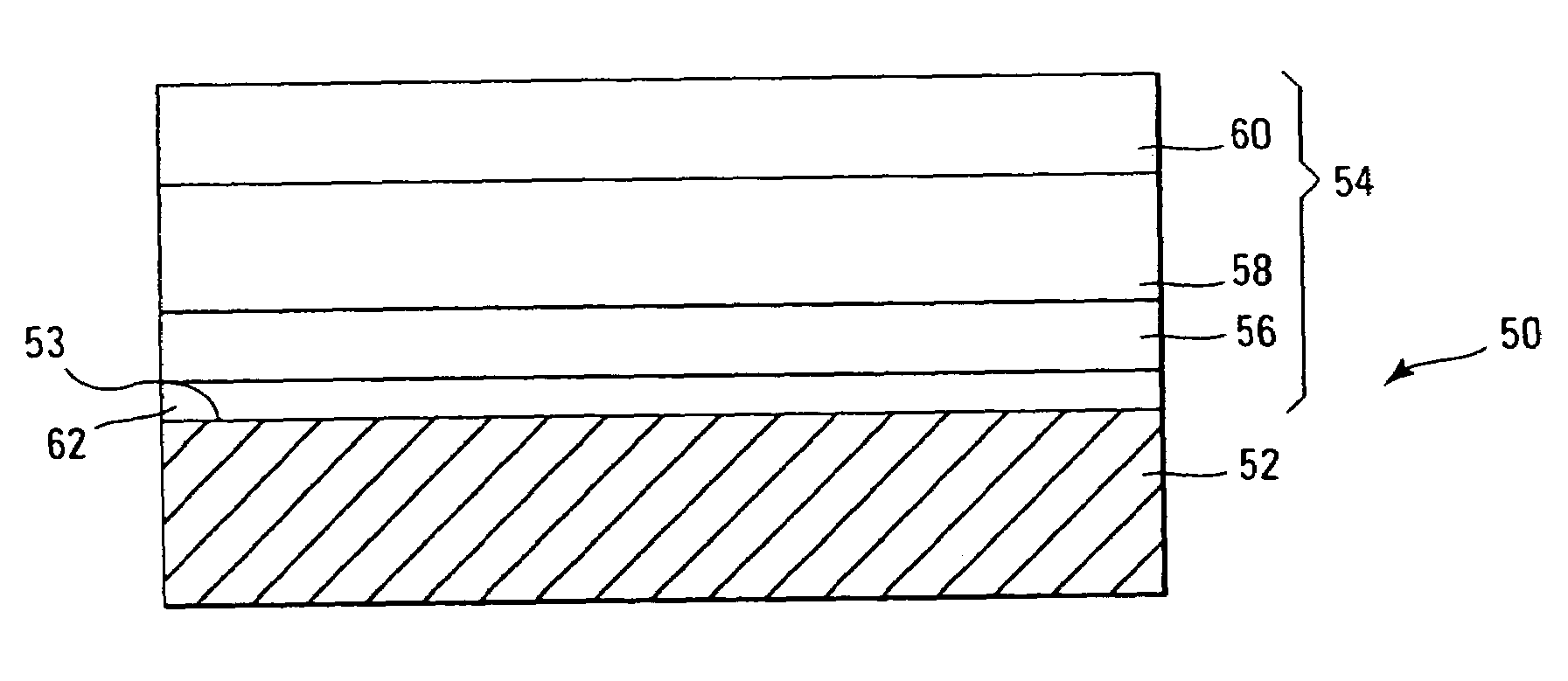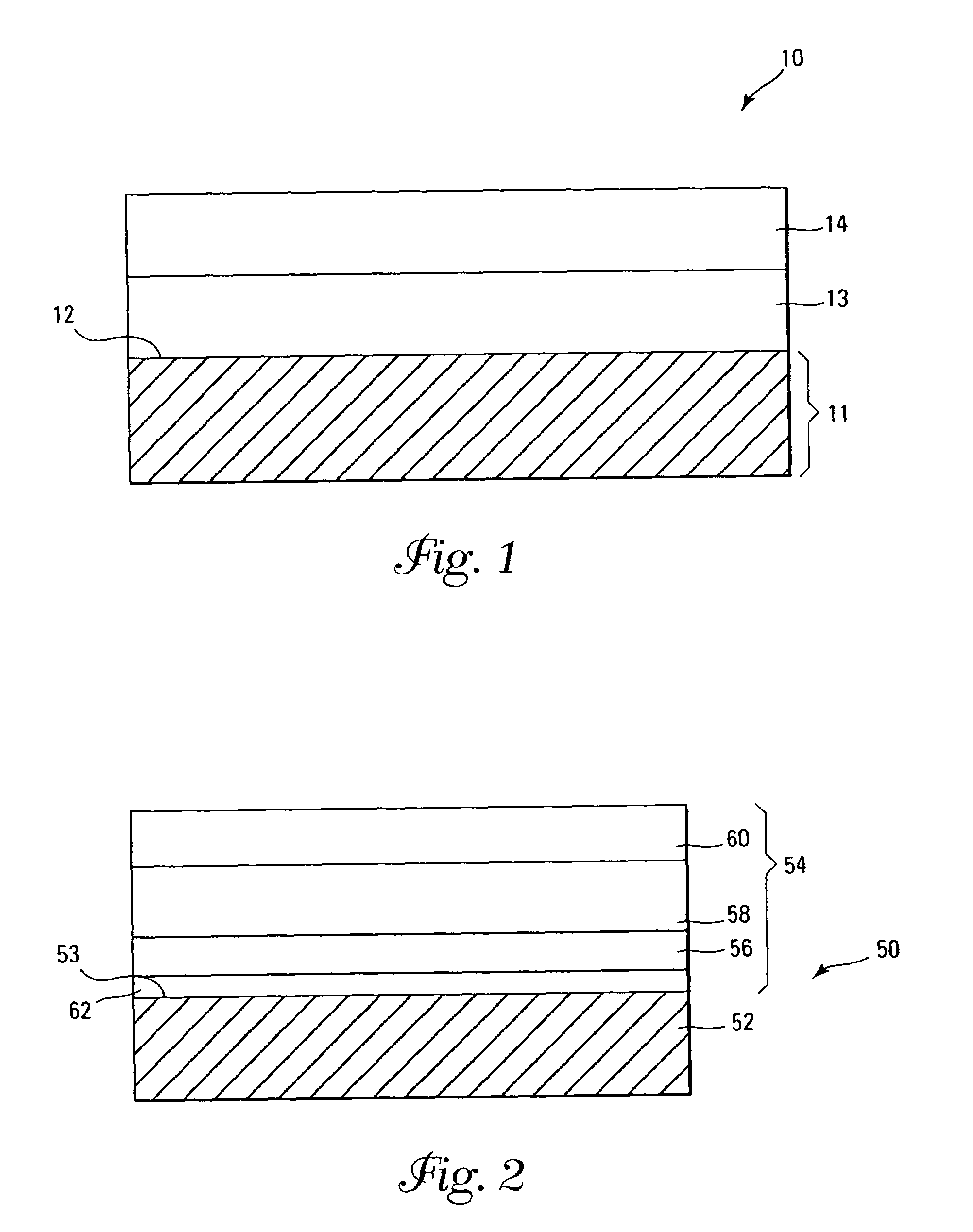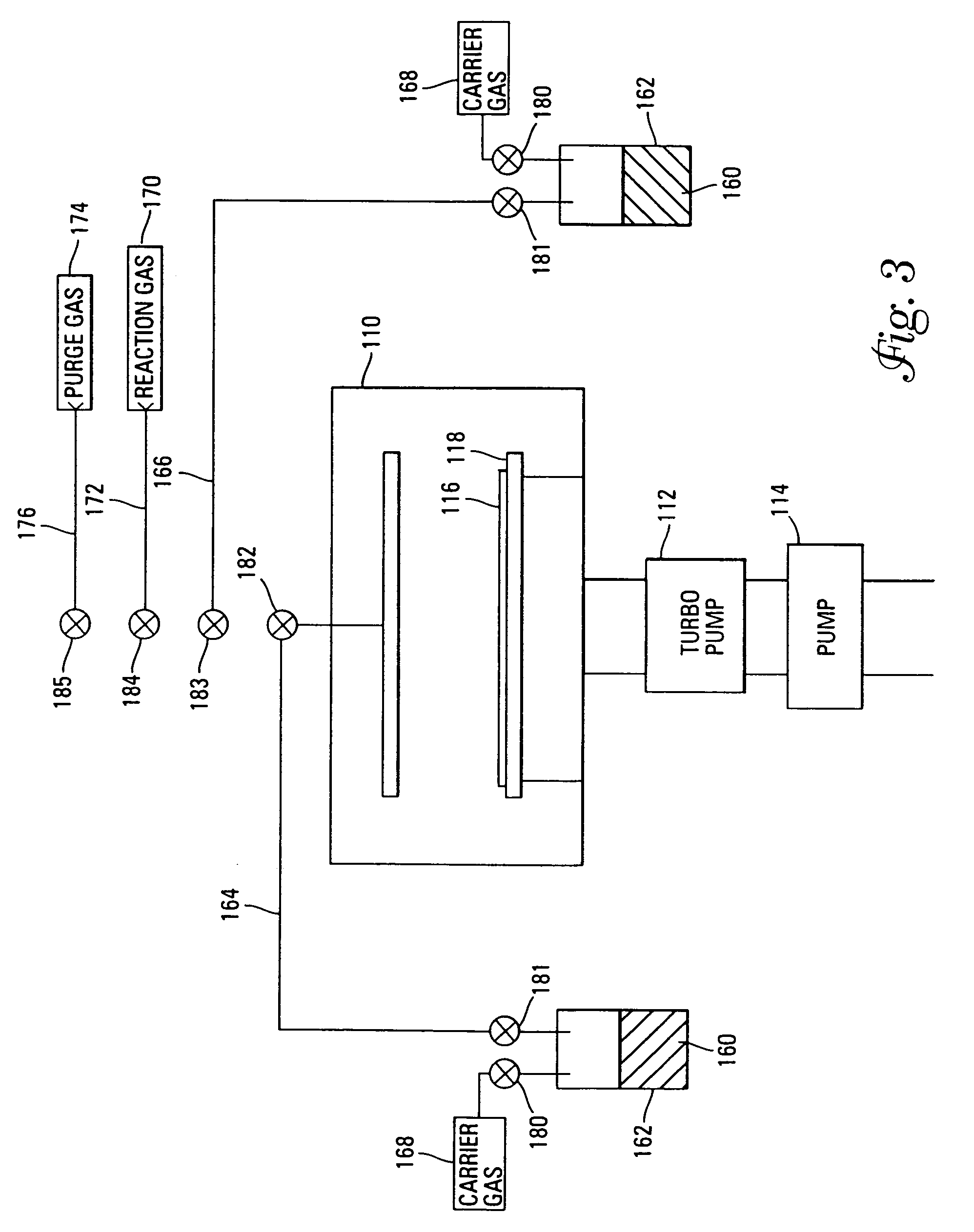Systems and methods of forming refractory metal nitride layers using disilazanes
a technology of refractory metal nitride and disilazanes, which is applied in the direction of coatings, chemical vapor deposition coatings, capacitors, etc., can solve the problems of frequent creation of undesirable interfacial layers of siosub>2 /sub>, high leakage paths and channels, and dielectric layers approaching only 10 in thickness, so as to minimize the effect of detrimental gas phase reactions and improved control of layer thickness
- Summary
- Abstract
- Description
- Claims
- Application Information
AI Technical Summary
Benefits of technology
Problems solved by technology
Method used
Image
Examples
example 1
Pulsed Chemical Vapor Deposition of Tantalum Silicon Nitride
[0072]Using a pulsed CVD method, the following precursor compounds were pulsed for 200 cycles in a deposition chamber as described in FIG. 3 containing a borophosphosilicate glass (BPSG) substrate, each cycle consisting of pulses in the following order: (1) tantalum pentafluoride (Alfa Aesar, Ward Hill, Mass.), (2) tetramethyldisilazane (TMDS) (Sigma-Aldrich Chemical C., Milwaukee, Wis.), (3) tantalum pentafluoride and (4) disilane (VOC Gases). During each cycle, excess amounts of each precursor compound not chemisorbed were purged from the chamber after chemisorption and prior to the introduction of the next precursor compound using an argon sweep at 30 mL / min and a vacuum pump. The substrate temperature was kept at approximately 320° C. throughout the entire deposition process.
[0073]At the end of the pulsed CVD process, a 1375 Å thick mirror-like layer of tantalum silicon nitride was formed. The layer contained about 54 a...
PUM
| Property | Measurement | Unit |
|---|---|---|
| temperature | aaaaa | aaaaa |
| pressure | aaaaa | aaaaa |
| temperature | aaaaa | aaaaa |
Abstract
Description
Claims
Application Information
 Login to View More
Login to View More - R&D
- Intellectual Property
- Life Sciences
- Materials
- Tech Scout
- Unparalleled Data Quality
- Higher Quality Content
- 60% Fewer Hallucinations
Browse by: Latest US Patents, China's latest patents, Technical Efficacy Thesaurus, Application Domain, Technology Topic, Popular Technical Reports.
© 2025 PatSnap. All rights reserved.Legal|Privacy policy|Modern Slavery Act Transparency Statement|Sitemap|About US| Contact US: help@patsnap.com



